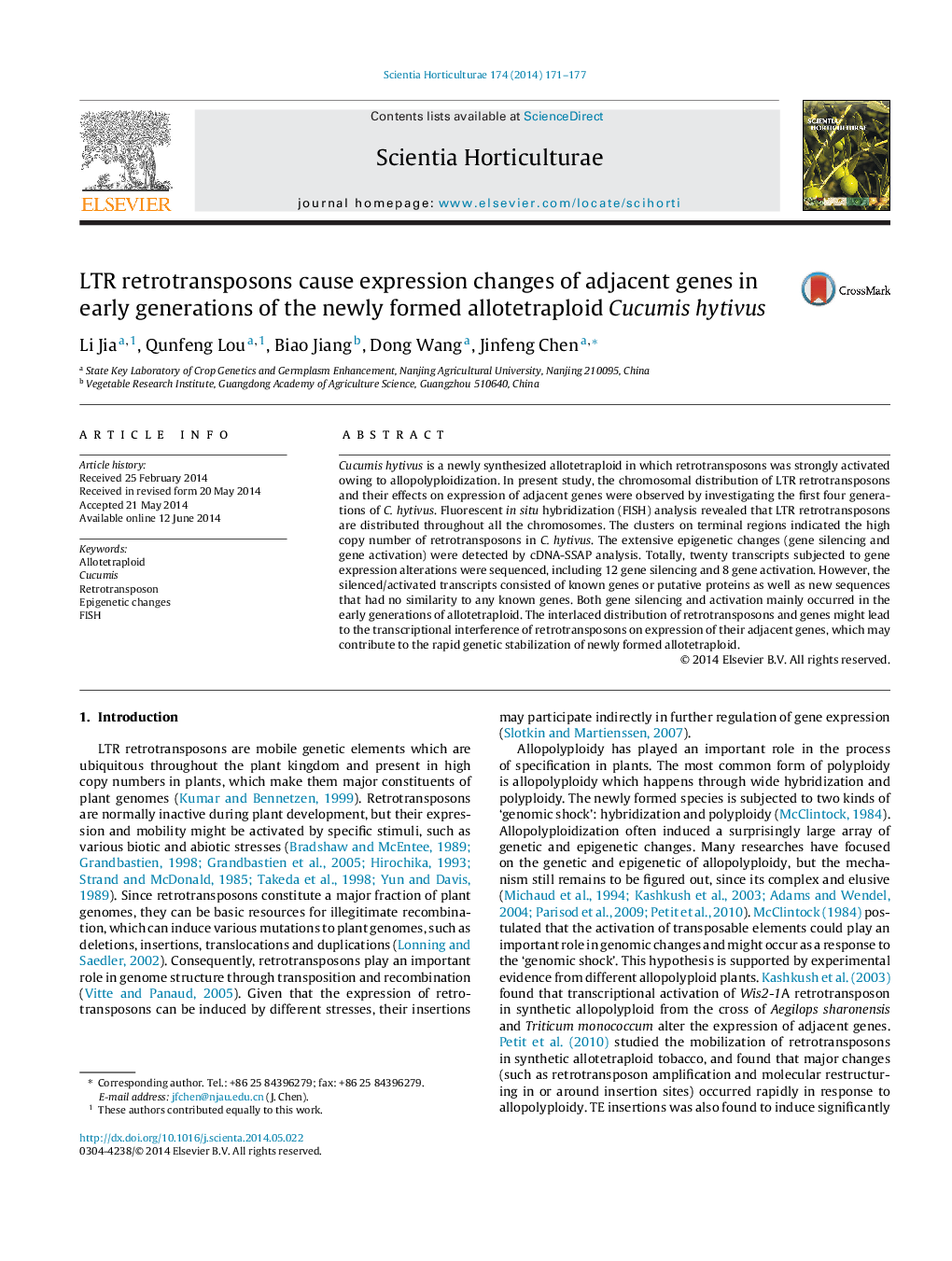| Article ID | Journal | Published Year | Pages | File Type |
|---|---|---|---|---|
| 4566723 | Scientia Horticulturae | 2014 | 7 Pages |
•LTR retrotransposons are distributed throughout all the chromosomes of the newly synthesized Cucumis allotetraploid, with clusters on the terminal regions.•The epigenetic changes were mainly present in the early stage of allotetraploid, and it would be stably inherited in the subsequent generation.•The genes flanking LTR retrotransposons with altered expression may be beneficial in the stabilization of Cucumis allotetraploid.
Cucumis hytivus is a newly synthesized allotetraploid in which retrotransposons was strongly activated owing to allopolyploidization. In present study, the chromosomal distribution of LTR retrotransposons and their effects on expression of adjacent genes were observed by investigating the first four generations of C. hytivus. Fluorescent in situ hybridization (FISH) analysis revealed that LTR retrotransposons are distributed throughout all the chromosomes. The clusters on terminal regions indicated the high copy number of retrotransposons in C. hytivus. The extensive epigenetic changes (gene silencing and gene activation) were detected by cDNA-SSAP analysis. Totally, twenty transcripts subjected to gene expression alterations were sequenced, including 12 gene silencing and 8 gene activation. However, the silenced/activated transcripts consisted of known genes or putative proteins as well as new sequences that had no similarity to any known genes. Both gene silencing and activation mainly occurred in the early generations of allotetraploid. The interlaced distribution of retrotransposons and genes might lead to the transcriptional interference of retrotransposons on expression of their adjacent genes, which may contribute to the rapid genetic stabilization of newly formed allotetraploid.
